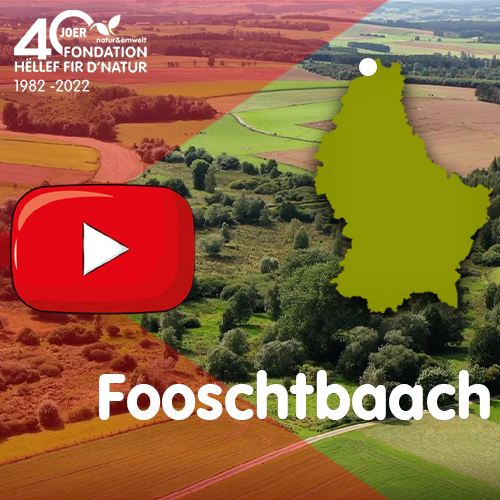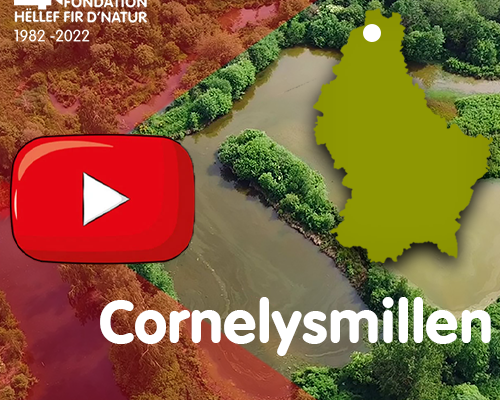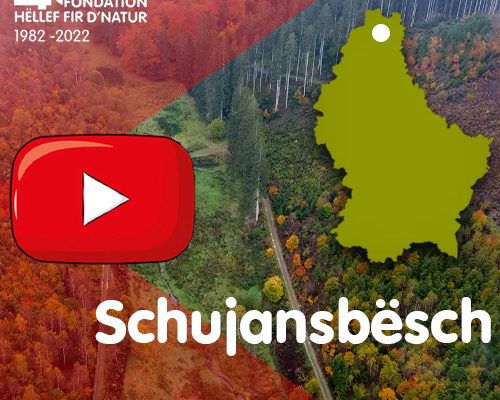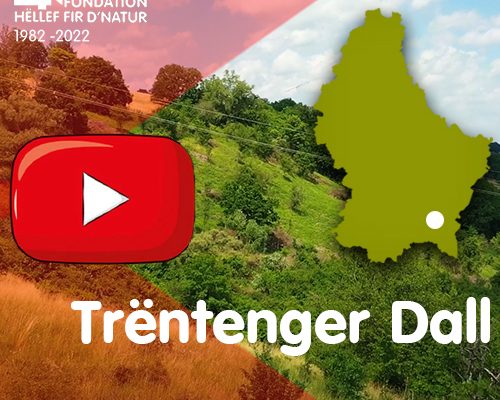Situé à la pointe nord du pays, entre la localité luxembourgeoise de Hautbellain et la localité belge de Gouvy, le „Fooschtbaach“ traverse la réserve naturelle du même nom. Le „Fooschtbaach“ est, avec le „Korn“, le seul cours d’eau luxembourgeois qui fait partie du bassin versant de la Meuse. La Fondation Hëllef fir d’Natur possède environ 31% des surfaces de cette zone protégée composée de 10,6 hectares de prairies humides de fauche, de jachères et de pâturages. La région est connue depuis longtemps par les ornithologues. Il est possible que le „Fooschtbaach“ ait été l’un des sites où le castor s’est réinstallé en premier lieu sur le territoire luxembourgeois, après son retour de Belgique.
– – – – – – – – – – – – – – – – – – – – –
The Fooschtbaach is located at the northern tip of the country, between the Luxembourg town of Hautbellain and the Belgian town of Gouvy, and flows through the nature reserve of the same name. The Fooschtbaach is, together with the Korn, the only Luxembourgish river that is part of the Meuse catchment area. The Fondation Hëllef fir d’Natur owns about 31% of the surface of this protected area, which consists of 10.6 hectares of wet meadows, fallow land and pastures. The area has long been known to ornithologists. It is possible that the „Fooschtbaach“ was one of the sites where the beaver first re-established itself on Luxembourg territory, after its return from Belgium.
– – – – – – – – – – – – – – – – – – – – – – – –
An der Nordspitze des Landes zwischen der luxemburgischen Ortschaft Hautbellain und der belgischen Ortschaft Gouvy gelegen, fließt der „Fooschtbaach“ durch das gleichnamige Naturschutzgebiet. Der „Fooschtbaach“ ist neben dem „Korn“ der einzige luxemburgische Fluss, der zum Einzugsgebiet der Maas gehört. Die Fondation Hëllef fir d’Natur besitzt etwa 31% der Flächen dieses Schutzgebietes, das aus 10,6 Hektar feuchten Mähwiesen, Brachland und Weiden besteht. Das Gebiet ist Ornithologen seit langem bekannt. Möglicherweise war der „Fooschtbaach“ einer der Orte, an denen sich der Biber nach seiner Rückkehr aus Belgien zuerst wieder auf luxemburgischem Gebiet ansiedelte.






